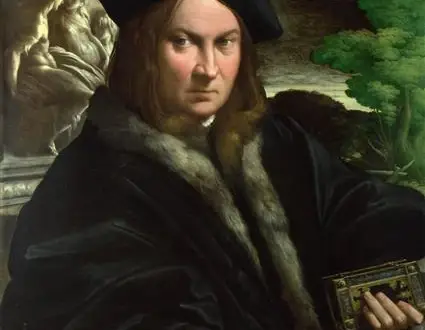Title of Artwork: “Portrait of a gentleman wearing a beret”

Artwork by Parmigianino
Year Created 1524
Summary of Portrait of a gentleman wearing a beret
Parmigianino’s Portrait of a Collector is a 1524 painting depicting a collector.
Four other Parmigianino portraits were included in Ranuccio Farnese’s “wardrobe” in 1587, along with this one. Parma’s Palazzo del Giardino has a more detailed description from 1670 that also refers to the subject as a religious person.
A self-portrait by Parmigianino was sold at Christie’s in London in the early 19th century, after it arrived in England from Italy. It was purchased by the National Gallery in 1977 from Lord Strafford’s Wrotham Park collection in 1857.
All About Portrait of a gentleman wearing a beret
Emporium, an art history journal, first published it in 1940, assigning it to the Roman sojounr of the painter. Based on stylistic similarities to works from that period, it was later dated to around 1524.
Particularly the bas-relief is similar to the fresco at San Giovanni Evangelista depicting Sts. Lucy and Apollonia; however, the portrait scheme and technique resemble those in the Portrait of Galeazzo Sanvitale.
Both the Uffizi depot (inventory 3971) and the Walker Art Center of Minneapolis, United States, have at least one older copy.
Francesco Baiardi was identified as the subject by art historian Freedberg in 1950; he was not a priest at the time. Offiziolo Durazzo, a miniated breviary that is currently housed in the Biblioteca Civica Berio in Genoa, belongs to him.
Parma-based painter Francesco Marmitta, sometimes referred to as Parmigianino’s master, completed this work some twenty years before the aforementioned painting by Parmigianino. It is the same person who appears in a painting in London, attributed to Dosso Dossi, by some.
Wearing a wide black fur-lined coat and a matching black hat, the subject is illuminated from the front by a single point of light. It is in his left hand that he holds the Offiziolo, a beautifully-decorated book, while the other is lying on the table, and has a gold ring on the little finger.
In the vicinity, there is a bronze statuette in ancient style, possibly representing a female deity (Ceres, according to some), as well as three bronze medals and an ancient silver coin, all of which were placed there to demonstrate the man’s interest in art and antiquity.
A marble bas-relief depicting Mars, Cupid, and Venus, a common theme at the Platonic Academy, is on the left, while a landscape is on the right.
Information Citations
En.wikipedia.org, https://en.wikipedia.org/.
























